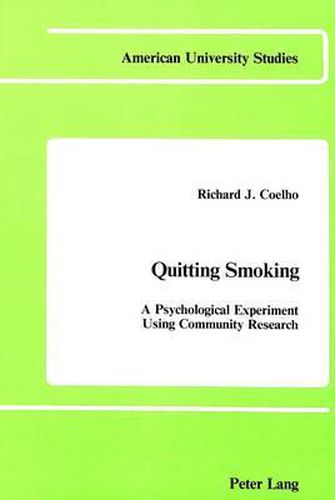Readings Newsletter
Become a Readings Member to make your shopping experience even easier.
Sign in or sign up for free!
You’re not far away from qualifying for FREE standard shipping within Australia
You’ve qualified for FREE standard shipping within Australia
The cart is loading…






Quitting Smoking utilizes the Experimental Social Innovation model for conducting applied research. This experiment permitted the comparison of two multi-component smoking cessation treatments. The efficacy of an innovative treatment model, developed through pilot-demonstration, was compared to a traditional cessation treat- ment existent in the community and a control condition. The innovative model using contingency contracting, social support and health education was shown to produce incremental improvement in treatment outcome compared to both comparative models. Findings from a typo- logical analysis showed that persons could be classified into several distinct types and subtypes (i.e., smokers; nonsmokers). The author also presents a detailed treatment manual for experienced or inexperienced individuals who would like to adopt this new treatment model. This book provides a stimulating resource for all social scientists involved in smoking cessation research, including researchers, university faculty, consultants, practitioners, and students interested in developing solutions to contemporary social problems.
$9.00 standard shipping within Australia
FREE standard shipping within Australia for orders over $100.00
Express & International shipping calculated at checkout
Quitting Smoking utilizes the Experimental Social Innovation model for conducting applied research. This experiment permitted the comparison of two multi-component smoking cessation treatments. The efficacy of an innovative treatment model, developed through pilot-demonstration, was compared to a traditional cessation treat- ment existent in the community and a control condition. The innovative model using contingency contracting, social support and health education was shown to produce incremental improvement in treatment outcome compared to both comparative models. Findings from a typo- logical analysis showed that persons could be classified into several distinct types and subtypes (i.e., smokers; nonsmokers). The author also presents a detailed treatment manual for experienced or inexperienced individuals who would like to adopt this new treatment model. This book provides a stimulating resource for all social scientists involved in smoking cessation research, including researchers, university faculty, consultants, practitioners, and students interested in developing solutions to contemporary social problems.